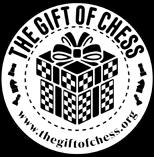 Chess 15 Jan 1961, Sun The Daily Breeze (Torrance, California) Newspapers.com
Chess 15 Jan 1961, Sun The Daily Breeze (Torrance, California) Newspapers.com
Chess by A. D. Carter
When the dignified dean of U.S. chess, 47-year-old International Grandmaster Samuel Reshevsky, lost a humiliating national championship tournament game to 15-year-old Bobby Fischer in 1959, the pathos of the defeat deeply touched me.
I could picture poor old Mr. Reshevsky tottering away from the board, a broken, creaking shell of a man, friendless and alone as his former admirers gathered in fickle audience about the victor, patting the child's head and helping him untie his bib.
I gathered my children about me, halved their allowances on the spot as a gesture to Sam, and warned them the first sign of precocity would result in a bash on the noggin.
Since then, I have read a book called The Treasury of Chess Lore, edited by Fred Reinfeld, and I find my bitterness was wasted and I no longer feel sorry for Sam.
It seems in the year 1920, one Sammy Reshevsky, eight years of age and barely tall enough to see across the chess table, capped a series of triumphs in Europe by touring the U.S. giving blindfold displays and clobbering his elders, 20 at a time, in simultaneous exhibitions.
In the due course of caloric intake and cellular multiplication this child prodigy became tall, dignified, benign and an International Grandmaster, and in my new mental picture was simply getting a taste of his own medicine in 1959.
Not Creaking
Further, it develops the post-1959 Reshevsky does not totter or creak, and was more deadly than ever in subsequent international tournaments. Sam does appear to be in a rut, however, because he still is doing today what he did in 1920—giving simultaneous exhibitions.
You can play a board against Sam Wednesday at the Santa Monica Chess Club in Lincoln Park (EX. 9-1324) or be one of his 60 opponents on Jan. 22 at 6525 Sunset Blvd. (OL. 6-3670)






















